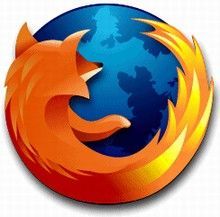'Faster and safer' Mozilla Firefox 4 against 'beautiful' Internet Explorer 9

Just days after Microsoft launched its 'beautiful' Internet Explorer 9, a new salvo has been launched into the web browser market - the faster and safer Firefox 4.
Mozilla Firefox 4 was released March 22 to succeed version 3.6.15 following nearly a year of development, twelve public betas, two release candidates. Mozilla's download tracker of the latest browser now shows 400 million active users and counting. The browser that boasts of revamped interface, faster browsing speeds, HTML5 support besides features like synchronization and tab grouping has already scaled new heights in terms of attracting users, rewriting history scripted three years ago when Firefox 3 attracted 8 million downloads in 24 hours to introduce itself as a strong contender against Internet Explorer.
Both Internet Explorer and Firefox have recently come to face strong competition from a comparative new comer, Google Chrome. As Chrome's market share continues to surge, both Microsoft and Mozilla found the need to revitalize their browsers' hold.
On March 14, Microsoft announced at the high-profile Southwest Conferences and Festivals (SXSW) in Austin Texas the availability of its new Web browser, Internet Explorer 9. IE 9, released on the 'Beauty of the Web' site, managed to garner positive reactions and keep up the initial momentum that saw its beta version hit 2 million downloads in its first two days.
Speed and radical design are two things both the new rival browsers flaunt. While IE 9 declared 'Fast is Beautiful' with a minimalistic design, Firefox 4 also does not fail to awe with its redesigned interface and heightened speed. A graphics processing unit (GPU) allows the browsers to pass on tasks to the computer's graphics card freeing CPU resources, and consequently reducing the page loading time.
Both the browsers are making waves for association with the social networking site Facebook, although varying in nature. IE 9's ability to turn any site into a Windows Applications turned popular among the social media lovers as users can drag and drop any url to the taskbar to automatically turn it into a Windows application. In case of the networking site, the chrome of IE will adapt to the Facebook logo and the user will be able to quickly jump to specific part of the sites and also receive notifications through icon updates. Firefox 4, on the other hand, has the new JSGameBench from Facebook, which aims to test HTML5 in real-world gaming scenarios. The Mozilla browser has also earned a positive image for supporting web development and the still-in-development HTML5.
While Internet Explorer 9 managed to awe netizens with its brilliant design and interesting features, the browser from Microsoft continues to face questions over security. Security, the Achilles's heel for IE 9, can turn into a compelling selling point for Firefox 4, which comes with two security fix-ups. The browser promises to keep advertisers from following your every move with the do-not-track feature. However, Internet Explorer also includes support for blocking ad trackers, while Firefox 4 needs add-ons to activate the feature.
In a crucial step towards bolstering user safety in the wake of growing hack attacks, Firefox 4 has fixed a hole that was documented almost a decade ago. Quoting Johnathan Nightingale, director of Firefox development at Mozilla, CNET reported that the exploit is a CSS sniffing history attack, in which malicious code can gain access to your browser history by manipulating link appearance and style.
With both the browsers neck-to-neck on design and speed, security will be the deal maker or breaker for the user. Microsoft openly struggles with security concerns as it continues to urge users to abandon decade-old Internet Explorer 6 while IE 8 fell to hack attacks at the recent Pwn2Own. Firefox, on the other hand, also enjoys the additional advantage of those few extra brownie points for being reliable and HTML5-friendly.
© Copyright IBTimes 2024. All rights reserved.





















